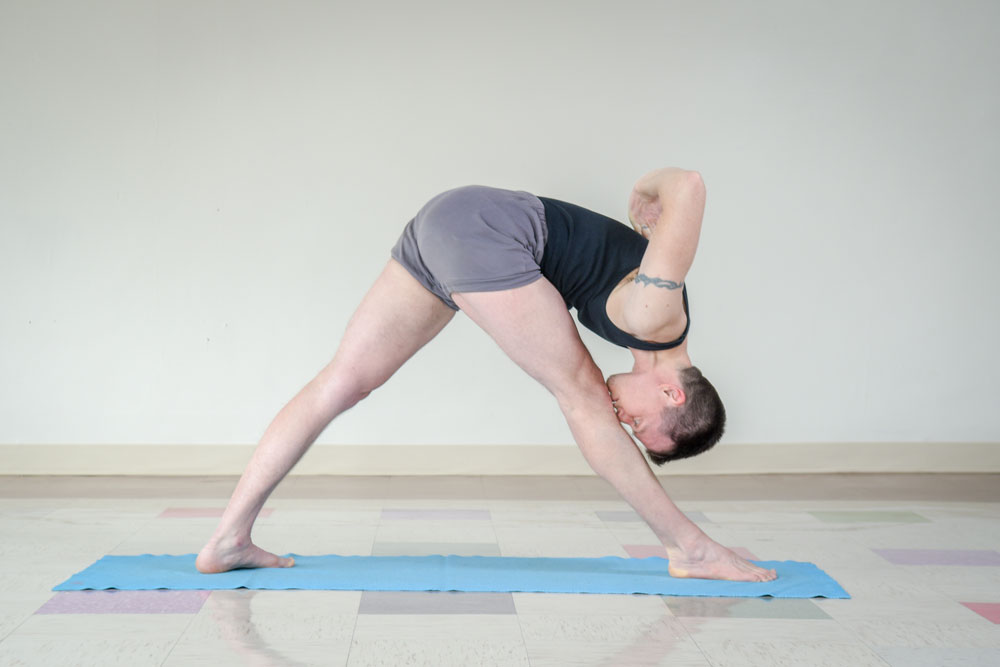It’s better to be stiff

A vast majority of people, even those of us who are not that stiff, are stiff to some extent. We ALL have tight spots but some of us have to stretch a little further to find them. Occasionally, there will be someone coming to class who seems to have very few tight spots at all. Someone who can bend themselves forward or backward or twist around into most all poses without working very hard. For the sake of convenience lets call this person, with few tight spots, Naturally Flexible or NF (just to be funny!).
If you put the NF student and a stiff student together in an Intro class, the stiff student will often see the NF as really “good at yoga” (and sometimes consequently themselves as not good). But is the NF person a better yoga student or even “good at yoga”? Most of the time the answer is “no”. In a (very nice) way, I tried to explain this fact, to the newer stiffer student but, not surprisingly, they don’t believe me. The stiffs don’t believe me because how can someone who can bend forward, put their head on their legs, be considered not “good at yoga”?
When we stretch a muscle that muscle sends information to our brain (there is probably some scientific person who can explain this better than me). We feel the stretch either intensely or not as intensely depending on how stiff we are. The sensation of a stiff person is usually fairly big/intense/loud, even when doing something very minimal. The NF student doesn’t receive as much feedback when doing the same minimal stretch, so she stretches further and often even further, in order to feel something.
The stiff student will rarely push beyond their limitations because their muscles are screaming “THAT’S DEFINITELY FAR ENOUGH”. While the NF student has gone on stretching and stretching and stretching. The NF can easily over stretch, past their limitations, in order to just feel more – after all it does feel good to stretch. And you can easily see how this over stretching, in an attempt to feel something, can lead to injuries.
Ask any yoga student who has ever had an injury (which is most yoga students) – injuries are a hinderance to a continued and on going practice. Sometimes people become disillusioned altogether, thinking that yoga is to blame, and just stop practicing. Or they take an extended time off from yoga and switch to biking or swimming instead. Biking and swimming are great, but they are not going to improve my dog pose, if that’s what I want to do.
Injuries are not the only possible problem that the NF faces in yoga. While the stiff student is telling themselves “I am not good at yoga”, because they are not flexible like the NF. The NF could be telling themselves “Look at me, I am so good at this yoga. Even after practicing for only a few months, I am already so advanced!” And they go on from there disillusioning themselves – especially if they have teachers who are continually rewarding them with praise for simply being an NF. It’s difficult to remain teachable if you think you have nothing to learn because you are “already so advanced”. (Truthfully, it’s difficult to teach anyone who thinks they have nothing to learn, either stiff or flexible, but this post is about the possible disadvantages of being flexible, which the stiff people need to hear.)
Yoga is not about being able to do poses physically well or not well. Sutra 1.2 defines yoga by saying yogah chittavritti nirodhah, which translates to “Yoga is the cessation of the movements in the consciousness”. It definitely doesn’t say that “Yoga is the ability to put your head on your leg”. Actually, there are only a few sutras out of the hundreds that even discuss poses at all. All the other sutras are concerned with increasing consciousness and awareness to find peace by becoming absorbed into the infinite. And Hatha Yoga uses the body as a vehicle to find this increased consciousness. It’s about the integration of the body, with the mind and breath. You don’t have to be flexible (or young or fit) to work on this integration. You just need to be in the appropriate class for your physical skill level.